I absolutely love the bold, tropical vibes that hibiscus flowers bring to a garden. However, it might be time for a trim if you've ever questioned why your plant doesn't bloom as much as you'd like or looks a little wild.
I'll show you how to prune hibiscus plants in this article. Their blooms will be larger, brighter, and healthier throughout the season!
Why Do You Need To Prune The Hibiscus Plant?
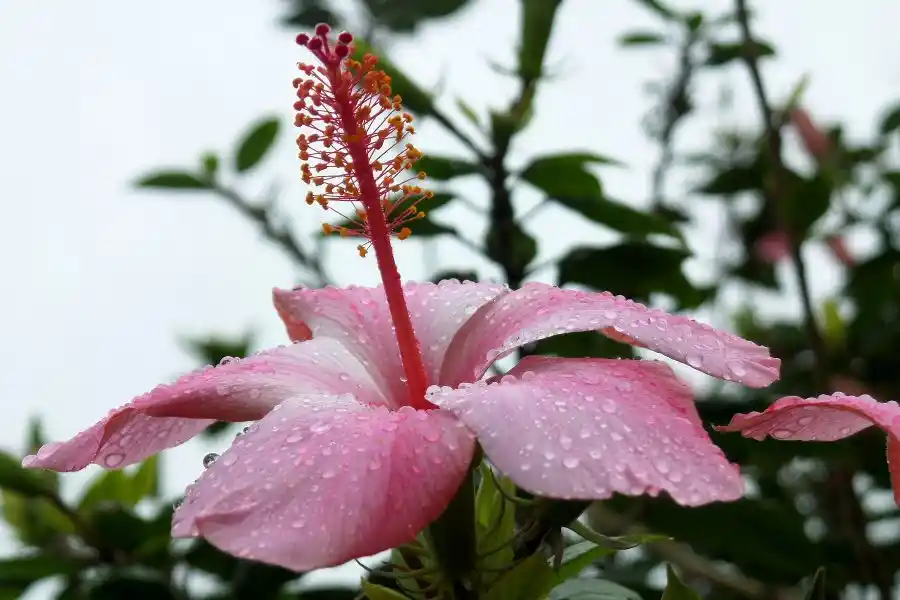
Regular pruning is the secret if you want your hibiscus to bloom its best.
Pruning is more than just tidying up the plants. It also helps them grow healthier and more beautiful. By pruning your hibiscus, you're promoting branching, which helps to produce more stems to form flower buds.
Another bonus? Pruning increases air circulation and allows sunlight to reach deeper into the plant. That makes a big difference in keeping the plant happy and preventing mold in humid weather.
When you prune, you can cut off some flower buds along with leaves and stems. This may postpone blooming a little. However, in my experience, the reward is well worth the effort.
Types of Hibiscus You Can Grow
There are more than 200 varieties of hibiscus, and each of them will need a different way of pruning. Anyway, we will discuss the 3 main types – tropical, hardy, & swamp hibiscus.
Tropical Hibiscus
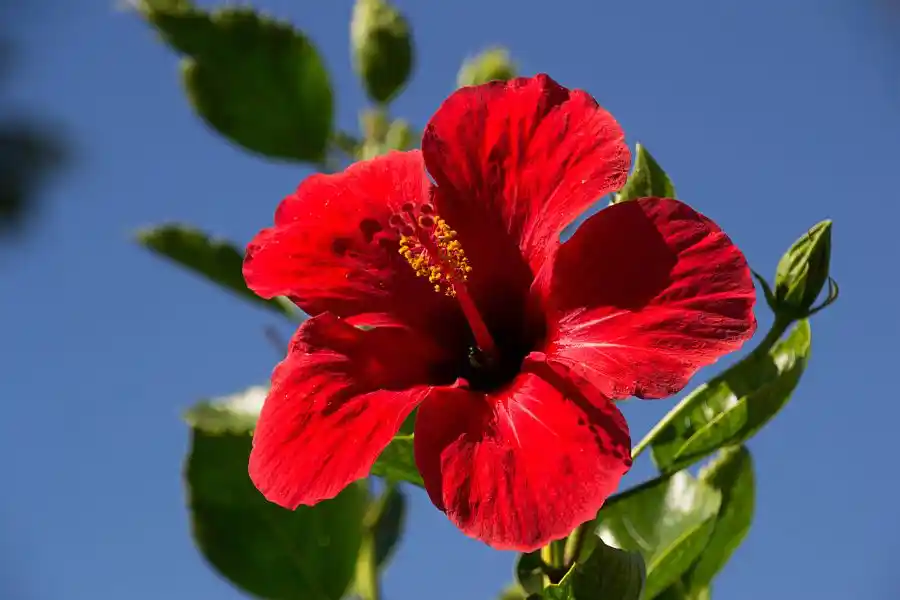
This type is typically found in patios and sunny gardens. Tropical hibiscus (or Chinese hibiscus) can’t withstand cold and prefers warmth. They are available in vivid hues such as gentle pink, orange, yellow, and red.
Hardy Hibiscus
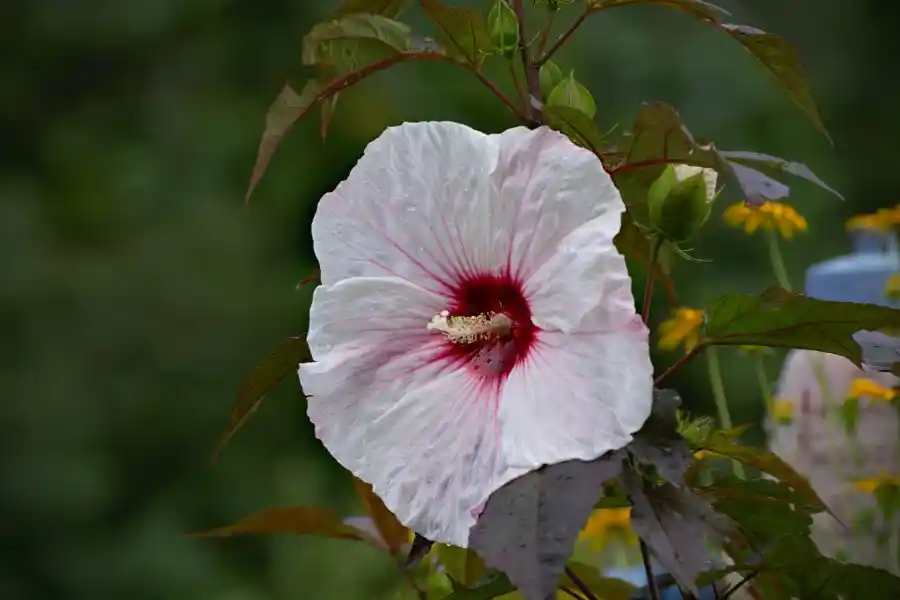
This is a great choice if you live somewhere with cold winters. Hardy hibiscus plants can withstand frigid conditions and bloom with enormous, eye-catching blooms. Some blooms can be as big as a dinner plate!
Swamp Hibiscus
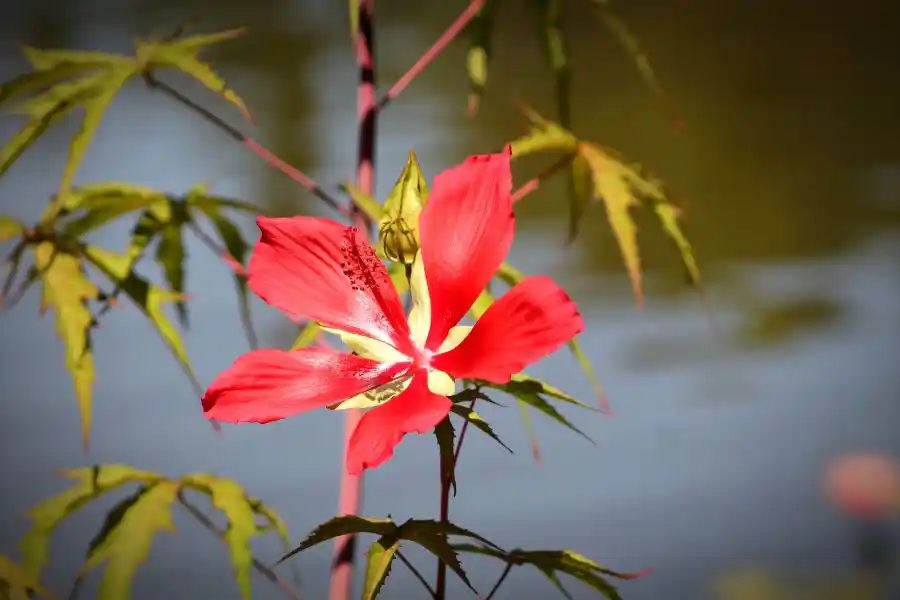
Now, this one’s a showstopper if you’ve got a wet, marshy spot in your garden. Swamp hibiscus, also called scarlet hibiscus, grows up to 7 feet tall and prefers damp soil.
Those star-shaped, deep-red blossoms are a major attraction for hummingbirds and butterflies.
| Bloom Time: Tropical hibiscus: From mid-summer to the first frost Hardy hibiscus: From spring to late fall Swamp hibiscus: From July to September |
The Best Time to Prune Your Hibiscus Plants
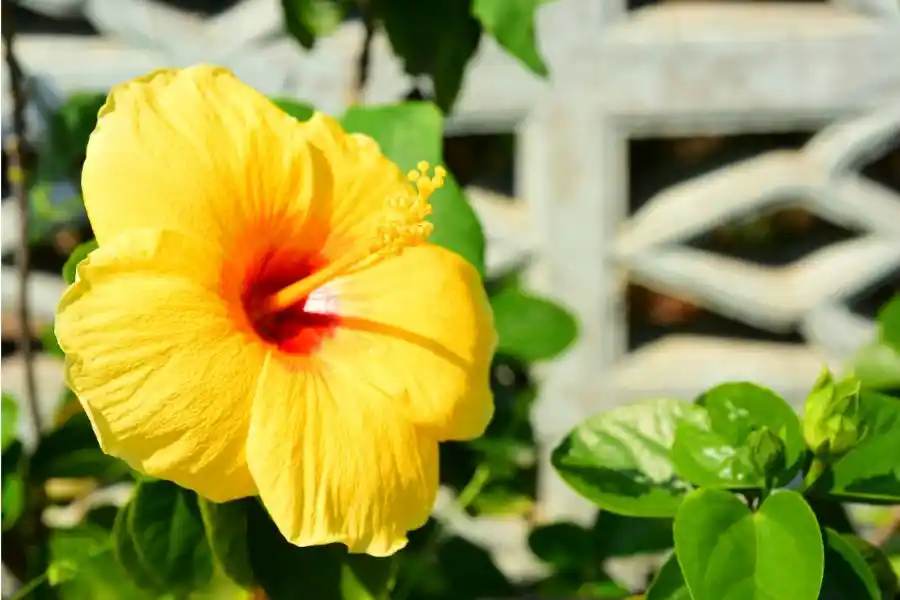
The best time will depend on the type of hibiscus you're growing. However, the rule is always to prune when the weather is warm or mild.
Why?
It’s because the fresh cuts can make the plant vulnerable in a cold climate.
Early spring is the best time to prune hibiscus for most gardeners. However, you can also prune in the fall if you live in an area that doesn't have frost.
And if you would like to bring your hibiscus inside for the winter, prune it before the cold comes.
And it's best to cut your tropical hibiscus before bringing it inside for the winter. It keeps the plant neat and makes my sunroom much easier to manage.
| Pro Tip: Snip any dead, damaged, or diseased stems off whenever you notice them. |
How to Prune Hibiscus Plants the Right Way
Pruning is not such a difficult gardening task. You need to follow some simple tips on how to prune hibiscus plants properly. Let’s start with tropical types.
How To Prune Your Tropical Hibiscus
The standard rule: Always cut stems back ~ 1/3
Step 1: Find long stems to cut
I usually take an overall look at my plants and identify which stems I should cut off.
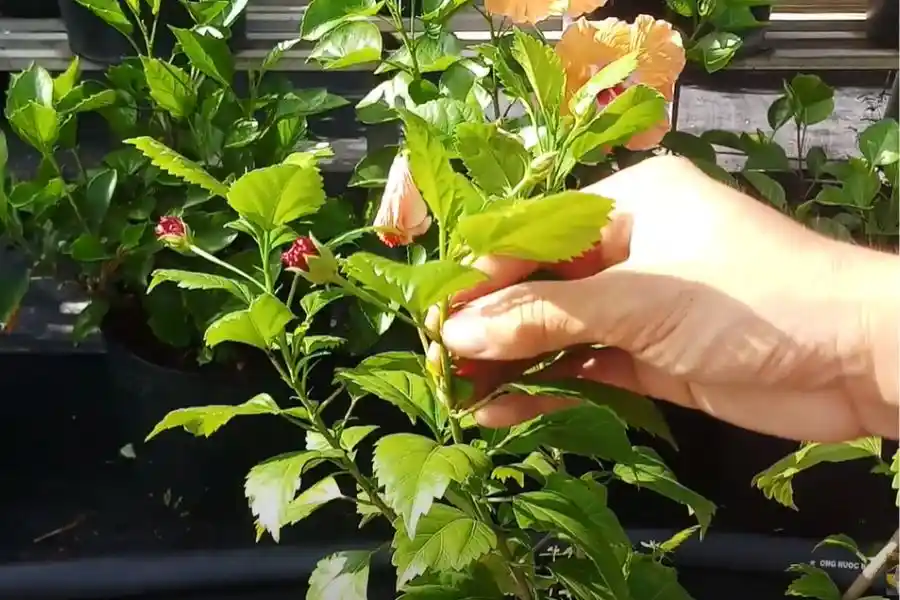
Step 2: Identify the outward-facing leaf on each stem
Find one about 1/3 of the way down the stem (or longer if the stems are still too thin). You'll still notice a little bump sitting there even after the leaf has already fallen.
You should always choose the outward-facing leaf so that the plant can reach out and grow bigger later.
I also avoid cutting too close to the top. In this way, new shoots will weaken and then grow into small flowers.
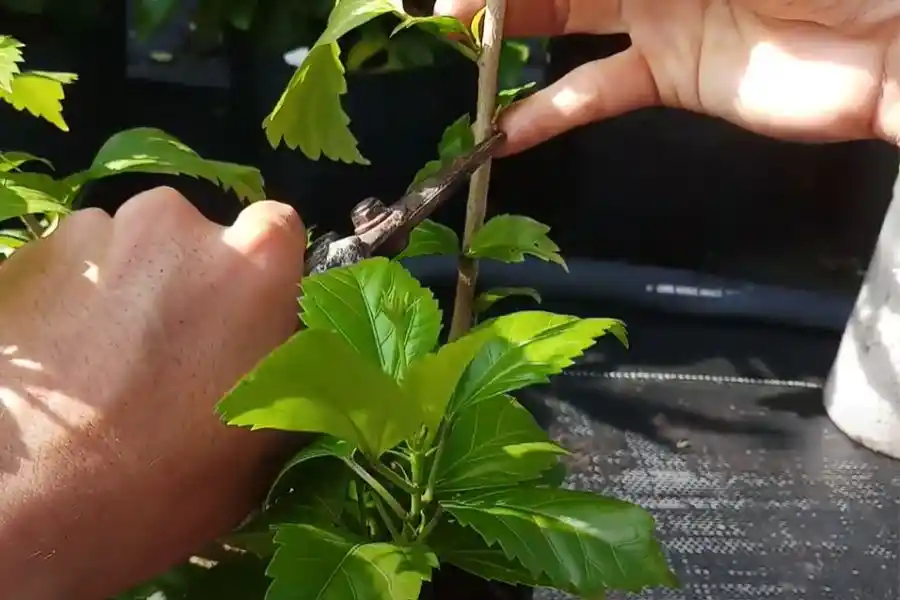
Step 3: Cut about 1/4 inch above the node
I always use sharp, clean pruning shears and cut at a 45-degree angle. It lowers the chance of illness and aids in the flow of water off the cut. ¼ inch (~0.5cm) above the node will be a great cut.
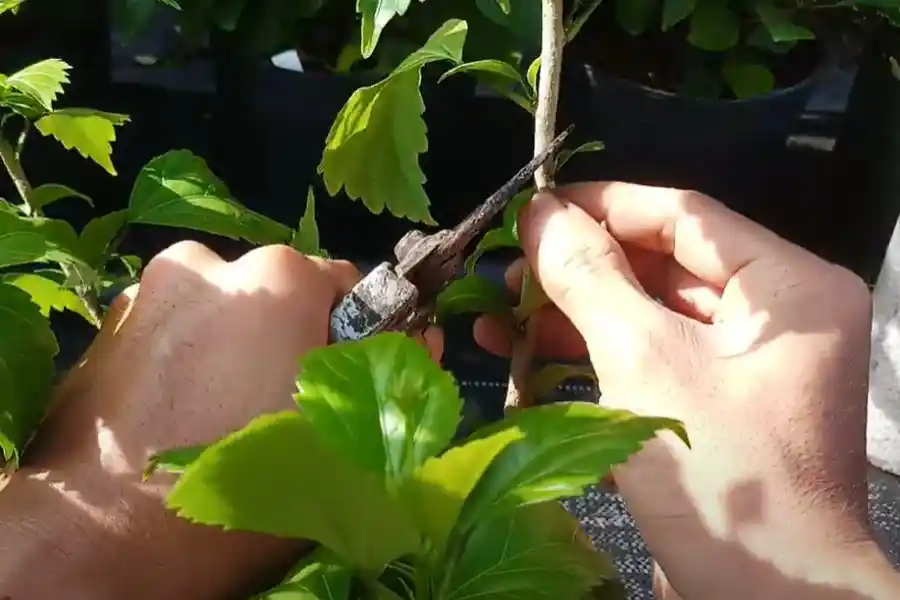
Step 4: Keep doing the same with all the long stems
Take your time and prune around the plant.
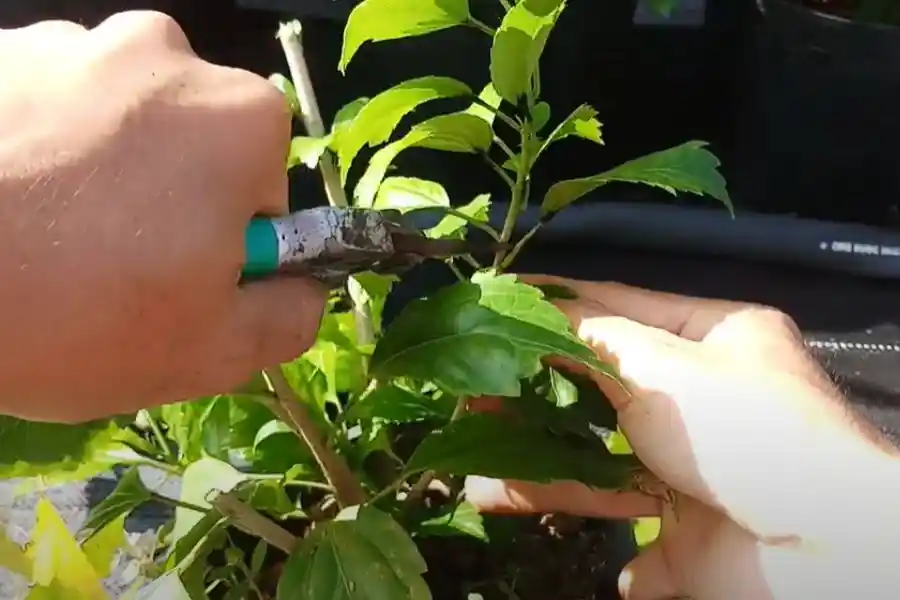
Step 5: Take a good look at the overall shape
Yep – just step back and watch your plant again. You may need to trim a little more until it looks well-balanced.
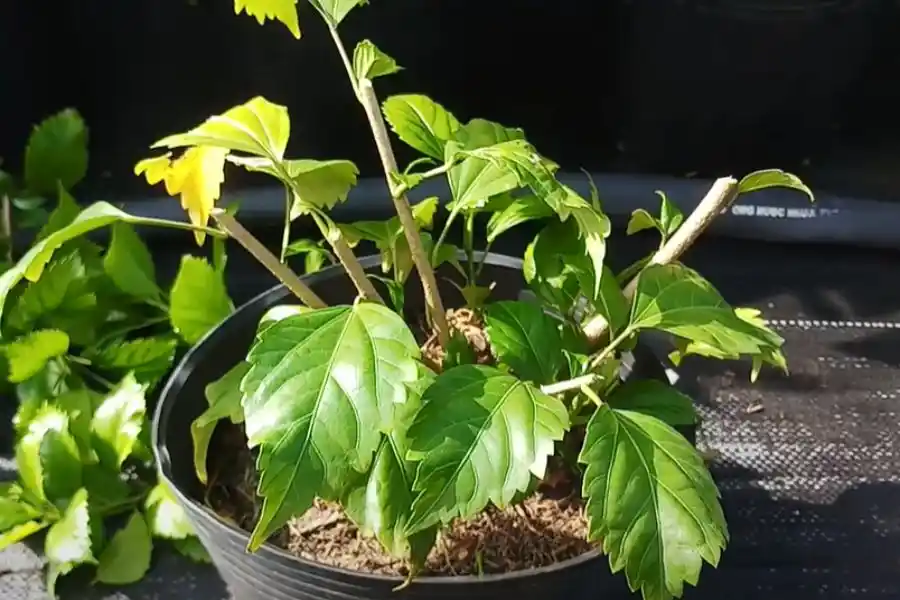
Step 6: Fertilize your hibiscus plant right after pruning
I usually feed my plants with some slow-release fertilizer right after pruning. For a pot with a diameter of around 20-23 cm, you can add 10-15 fertilizer granules. This boosts healthy and vibrant new growth of branches.
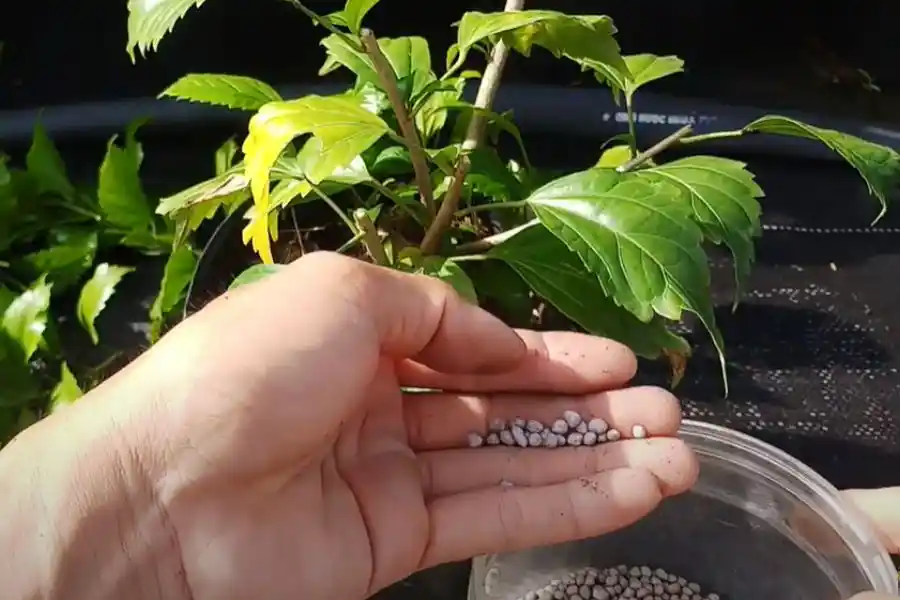
How To Prune Your Hardy Hibiscus & Swamp Hibiscus
When winter arrives, both of these plants naturally die back to the ground. But don't worry! Fresh, robust new shoots will emerge from the base in the spring.
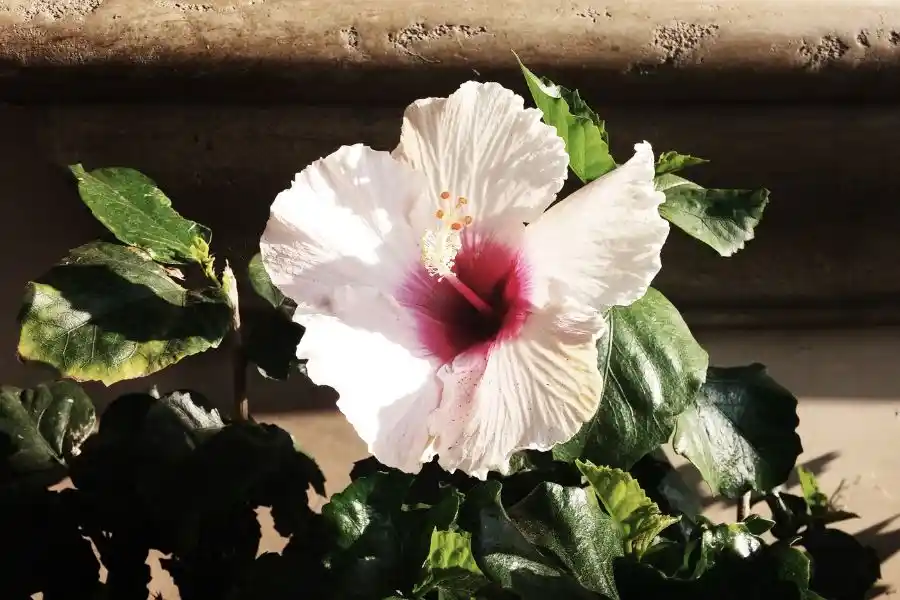
I prune all the dead stems to the ground in late fall or early spring, before new growth shows up.
During the growing season, the only pruning I do is to cut off any dead, damaged, or diseased branches. This keeps the plant looking nice and healthy.
Aside from that, swamp hibiscus and hardy hibiscus are fuss-free, low-maintenance plants. Just let them do their thing and savor those enormous, exquisite blossoms.
| Gardening Tip: All hibiscus types require some form of pruning each year. For example, swamp and hardy hibiscus require a thorough pruning of the dead stems almost every year. Meanwhile, tropical hibiscus may require harsh pruning or just some small, selective trimming. |
5 Useful Tips to Boost Hibiscus Growth
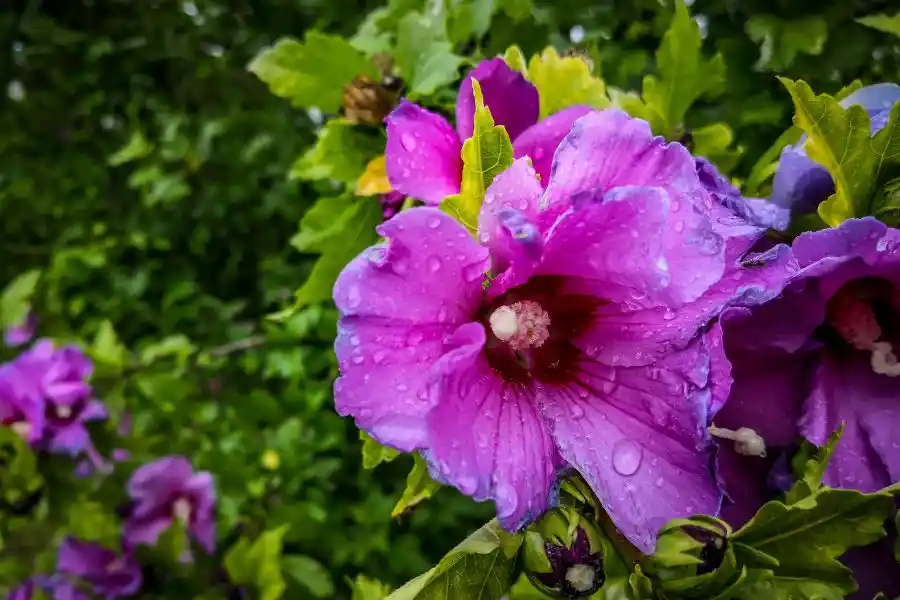
To be honest, growing hibiscus is super simple. Here are some of my go-to tips to keep mine blooming big and bright all season long:
- Choose the right hibiscus for your climate: You can still grow tropical hibiscus in a pot if your local winters are too cold. Move it indoors as the temperature starts to drop.
- Plant it in nutrient-rich soil: To give it a healthy start, add old manure or organic compost before planting.
- Pruning for a new batch of shoots: To encourage new shoots at the same time, cut off a few of the shoots that appear after the previous pruning.
- Give it the appropriate fertilizer: Use a slow-release fertilizer to feed your hibiscus. It will gradually release the nutrients into the soil (for weeks or months).
- Let it get loads of sunshine: Hibiscus is a sun lover! The more direct sunlight it gets, the more flowers you’ll see. You should let it get at least 6 to 8 hours of direct sunlight every day.
- Keep the soil evenly moist: However, your hibiscus doesn't like to sit in damp soil. Water it whenever the top inch feels dry and mulch around the base to lock in moisture and keep the roots cool.
| Do You Know? You can grow hibiscus from seeds and stem cuttings. And hibiscus flower sizes can range from 2 to 12 inches. |
Final Words
Finally, you have mastered the skills on how to prune hibiscus plants now. You will see an incredible difference in flower size after pruning.
Whether you’re growing tropical, hardy, or swamp varieties, a little care with your pruning shears will go a long way.











